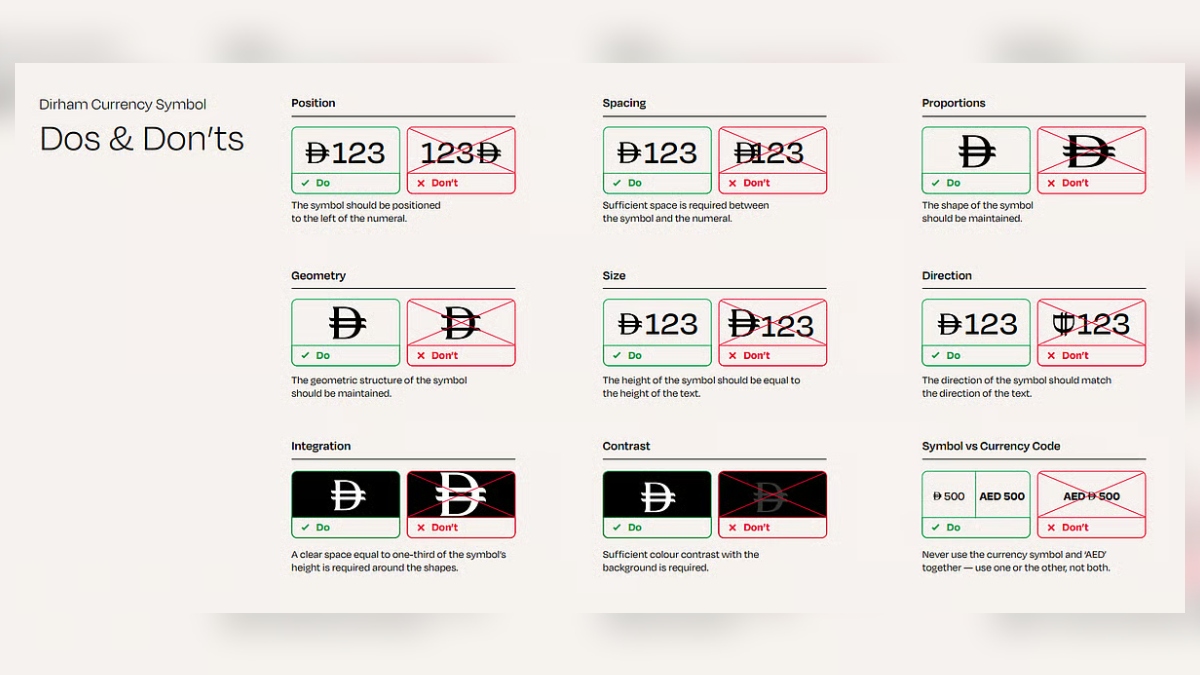The Central Bank of the UAE (CBUAE) has released detailed guidelines on how the new dirham symbol should be used across official documents, retail transactions, and digital platforms, as the country rolls out its latest move to unify its currency’s physical and digital identity.
The new symbol—an uppercase “D” intersected by two horizontal lines—must always be placed before the numeral, never after, and must not be used together with the “AED” abbreviation. For instance, an item worth 500 dirhams should appear as (symbol) 500, not 500 AED or (symbol) 500 AED.
The CBUAE emphasized that consistency is key across usage. Whether it’s appearing on invoices, receipts, mobile banking apps, or product tags, the symbol must align with the accompanying digits in size, weight, and font. The design must not be altered, stretched, recolored, or used for branding or decorative purposes.
Clear visual separation is also required: any standalone usage of the symbol—such as in pricing tags—must maintain a minimum clear space of one-third its height around it, ensuring legibility in both print and digital formats.
Importantly, the symbol should not replace the word “Dirhams” in formal or legal writing. In legal documents, writing “Five Hundred Dirhams” remains the correct usage, and inserting the symbol in such text is discouraged.
The CBUAE has outlined where the symbol is appropriate: on invoices, receipts, POS systems, and financial apps, among others. However, it should not appear in company logos, promotional materials, or as a design element in splash screens or app icons.






